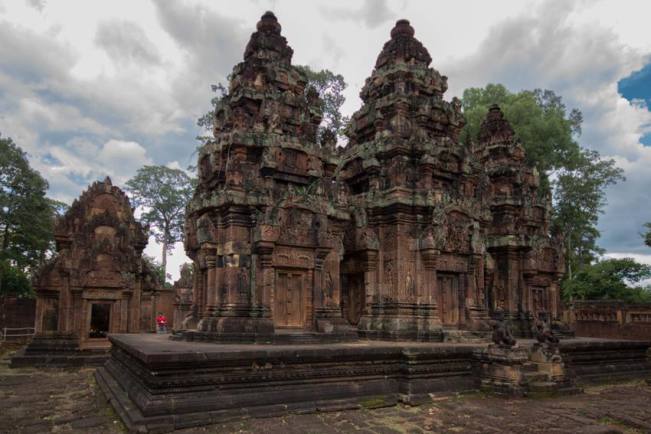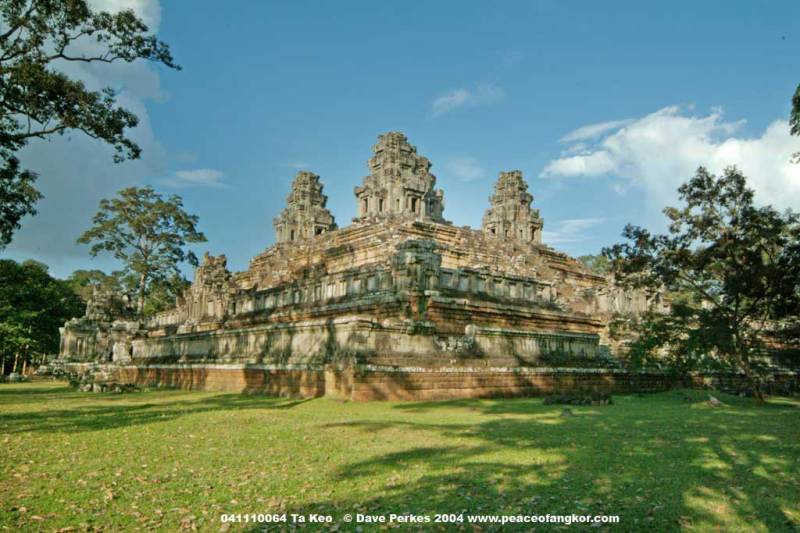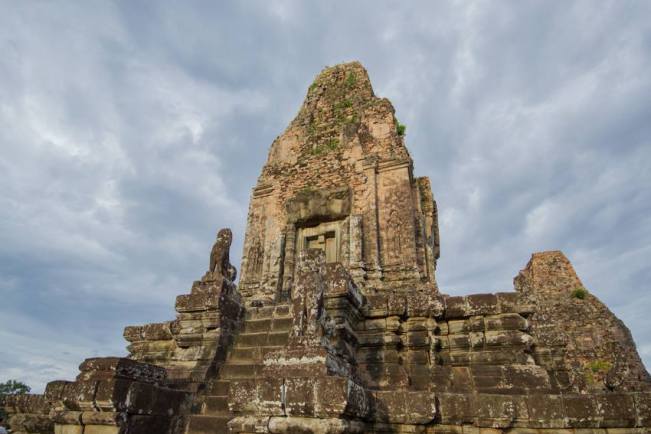Scattering around Tonle Sap lake and Kulen mountain in Siem Reap hundreds of sacred temples were built centuries ago, which symbolise for political, religious and social power of an ancient empire. Nowadays they remain to be one of the most famous attractions in Southeast Asia. This is 10 best temples that are not to be missed when you visit Cambodia.
1. Angkor Wat
Angkor Wat is the largest and most beautiful temple in the Angkor complex. Located in the large area of nearly 200ha, surrounded by a lake, the arrangement of this temple symbolises for traditional Khmer temples. Built during the reign of King Suryavarman II in 12th century, Angkor Wat represents Khmer architecture with beautiful carvings around the temple.
.jpg)
In the end of 13th century, Angkor Wat gradually changed from a Hindu to a Buddhist temple. Unlike other temples in the Angkor complex, after being abandoned by the collapse of Khmer empire in 15th century, Angkor Wat still remained as a Buddhist temple.
2. Angkor Thom
Known as “the great city”, Angkor Thom was the last capital, also the longest during Khmer empire, built by King Jayavarman VII in the end of 12th century. Spreading over 9 kilometers of land, Angkor Thom consists of many temples from last centuries, all built by Jayavarman and his successors. In the middle of the complex, the Bayon temple was located around Victory Square.
.jpg)
3. Bayon Temple
Bayon Temple was built in 12th century by King Jayavarman VII as a part of the expansion of Angkor Thom. Bayon is also the only temple in Angkor which destined for Buddhism. After the death of King Jayavarman, Bayon was renovated by Hinduism. This is the most impressive temple in the Angkor complex because of its magnificence and the holy feelings it brings to travelers when visiting.
.jpg)
4. Ta Prohm.
Built since 1186, Ta Prohm is a Buddhist temple, destined for mother of King Jayavarman VII. The temple was home to 12.500 people including 18 priests and 80.000 Khmer people. Ta Prohm was believed to store gold, pearl and silk. After the collapse of Khmer empire in 15th century, this temple was abandoned and swallowed by tropical forests.
.jpg)
5. Banteay Srei
Far from the main temples, Banteay Srei is one of the smallest temples in Angkor. However, this temple attracts visitors for its beautiful carvings. Banteay Srei was built by pink sandstone, walls were decorated elaborately with floral motifs and Ramayana story.

6. Phnom Bakheng
Phnom Bakheng is the Hindu temple on the mountain, built in the end of 9th century. This temple was the architectural center of the new capital during the reign of King Yasovarman. Phnom Bakheng faces east and was built in the pyramid form consisting of six floors. After completed, Phnom Bakheng had 108 small towers around the temple. Located on the top of a hill, Phnom Bakheng is one of the well-known destinations to watch beautiful sunset in Siem Reap.
.jpg)
7. Ta Keo
Built by King Jayavarman V, son of Rajendravarman when he was 17 as a private place for Shiva God, Ta Keo is the unfinished temple due to the king’s death.

Some people said that this temple was struck by lightning when it was being built and the construction was stopped while the main structure was almost completed. Ta Keo is the only unfinished temple in Angkor Thom but it was built by green sandstone, completely different from brown or grey color of other temples in Angkor.
8. Banteay Kdei
Located in the southeast Ta Prohm and east Angkor Thom, Banteay Kdei known as “The Temple of Buddhism monks’ cells” is the Buddhist pagoda in Angkor. Built in the middle of 13th century by King Jayavarman VII, nowadays this pagoda is crumbled because of construction errors and the bad quality of sandstone but it is being renovated day by day. Besides, Banteay Kdei was occupied by Buddhist monks in many centuries until 1960.
.jpg)
9. Pre Rup
With three towers in the center, Pre Rup looks like the miniature Angkor Wat. This is the second temple built after the capital was moved from Koh Ker to Angkor. Pre Rup was built by grey sandstone, less durable than pink sandstone like other temples in Angkor. Being abandoned for centuries, the complicated carvings have been almost damaged because of heavy rain.

10. Preah Khan
Preah Khan is one of the biggest temple complexes in Angkor. Similar to nearby temples, Preah Khan was restored many times. King Jayavarman VII built Preah Khan as his temporary residence when Angkor Thom was being built.
.jpg)
There are four entrances with the east entrance is destined for Mahayana Buddhism. The other main ways are destined for Shiva, Vishnu and Brahma with smaller doorways, emphasizing the inequality of Hinduism.
Source: Buffalotours
To Lan – Indochina Record Hanbook











